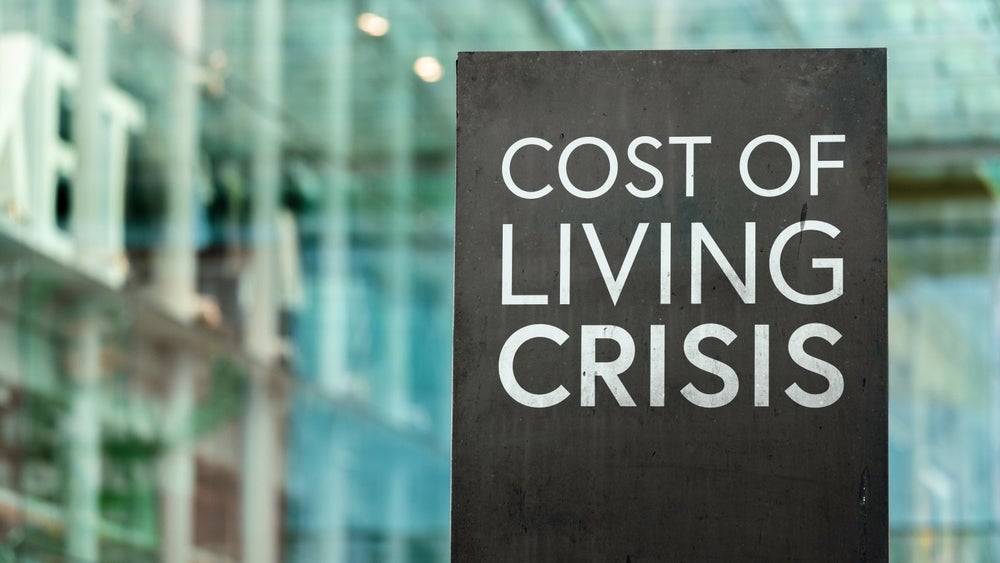Dolton, the chief executive of the world’s first online
person-to-person marketplace, Zopa. His company recently pulled out
of the US but, according to Dolton, is still doing well in the UK
and remains a strong, viable alternative to traditional banks for
consumer loans.
London-based Zopa, the world’s first online person-to-person
(P2P) lending marketplace, launched in the UK back in 2005. Its UK
business model remains remarkably simple: connecting people looking
for a loan with people looking to lend, with each party paying a
certain fee to participate. Zopa runs a sophisticated credit
scoring engine to help evaluate risk, and borrowing is spread
across a number of lenders to further mitigate risk.
Zopa set up shop in the US and Italy in December 2007 and
January this year, respectively, and has an application still
pending with Japan’s Financial Services Authority. The last time
RBI spoke to Zopa’s CEO, Douglas Dolton, was in December
last year (see RBI 584) – and in a bullish interview he
said, among other things: “Financial institutions are faceless.
People like helping each other and we are helping people to help
each other.”
For established banks, the threat from P2P lenders is big: that
borrowers will bypass banks altogether in the search for better
rates – and customer service – from like-minded people. Zopa won
the ‘Most Threatening Non-Bank’ trophy at the RBI
international banking awards event in London earlier this year
(see RBI 589).
But 2008 has proved to be a testing year for Dolton’s company.
Headcount at the London headquarters was reduced from 44 to 11 in
March, and Zopa recently pulled out of the US market altogether,
citing critically poor customer volumes.
A vast number of rival P2P operations have continued to hit
markets all over the world as both P2P payments and lending
markets, as well as ‘Web 2.0’ social media developments, have grown
in maturity – though a number of entrants have now begun to
struggle as the wider economic turmoil takes grip.
How well do you really know your competitors?
Access the most comprehensive Company Profiles on the market, powered by GlobalData. Save hours of research. Gain competitive edge.

Thank you!
Your download email will arrive shortly
Not ready to buy yet? Download a free sample
We are confident about the unique quality of our Company Profiles. However, we want you to make the most beneficial decision for your business, so we offer a free sample that you can download by submitting the below form
By GlobalDataHow has Zopa – the P2P industry pioneer – fared in the face of
the ongoing lending crisis? Has it benefitted as consumer seek out
better lending rates, or, as the US pull-out suggests, struggled to
find a place in the financial chaos?
RBI spoke to Dolton in London in mid-October.
RBI: Why has Zopa pulled out of the US market?
Is this a direct consequence of the credit collapse, or are other
factors at play?
DD: It is very interesting because we are sort of alone at the
moment in terms of our views about the US market.
Most people cite all kinds of garbage about [our] liquidity and
stability, that is not our situation at all. Our situation is,
quite frankly, the quality of applicants we were getting was very
low. It did not matter what approach we took to attract consumers,
the difference between January to September was nothing short of
startling. In January we had 1,600 applicants and made 116 loans.
In August we had 4,000 applicants and made 52 loans – so that is
how it worked out. We had more than twice as many applicants but
made half as many loans.
It was not a one-month reaction to pull out of the US, it was a
sustained period of watching this decline. In the end, I just said
‘you know, it just doesn’t make any sense to continue investing
there’, especially given the fact the UK business is doing very
well. It made much more sense to me, once I had spoken to the
investors, to get out now. My first inclination was to keep it
going, to keep funding it and remain in the US and remain a
survivor there.
RBI: There has been a significant amount of
activity in the US P2P lending market recently, good and bad. What
are your thoughts on those still in the market?
DD: Yes, there has been a lot of activity recently. LendingClub
came back online yesterday [14 October] but with massive
restrictions: it is only legal in 15 states as a lender, for
instance; borrowers have to self-acredit themselves; and lenders
have to have net worth in excess of $250,000, and so on.
I do this regular presentation at events about the history of
P2P lending and most people may know one model and think they
understand it but there is this very wide range. When you look at
LendingClub, what is fascinating about them is that they set the
interest rates on the loan – the lenders do not set the rates.
So in the LendingClub model the lenders get to choose who they
are lending money to on an individual basis but not at what rate. I
think that is fascinating.
If you look at the biggest player, Prosper, clearly they run a
more traditional model like Zopa. The lender there is in total
control about whether the loan gets made or not or at what interest
rates. But I still can’t get very excited by either of those models
[LendingClub or Prosper]. They just don’t seem like they generate a
lot of volume.
We took one week, just a random week of loan applications at
Prosper and ran them through our own credit decision filter and the
result was that Prosper were making about four times as many loans
as Zopa would on the same volume, and I thought, wow, that is
really interesting. So, in other words, somebody is wrong there.
Either we are wrong and we are too conservative or they are wrong
and they are generating too many bad loans.
And then Loanio, I mean Loanio just strikes me as totally
bizarre. They have been buying P2P lending as a key word on Google
since 2005. They finally launched in late September, early October
and their stated purpose is to serve the subprime market – I have
been very confused about Loanio since day one.
RBI: And your thoughts about the wider US
consumer loans market right now?
DD: I think it is very tough to analyse the predictive-ness of
the consumer loans market in the US at the moment. I think one
thing I can say, is what FICO scores used to mean do not mean
anything at the moment.
The FICO scores used to be predictive – but they are no longer
predictive and I can tell you that at first hand. We used to have
several borrowers that were high dollar borrowers, high net worth,
who defaulted straightaway, so that was just staggering to me. You
just do not see stuff like that.
American Express said today [15 October] that they were ‘cutting
their estimates as the operating environment continues to worsen’,
so I think you are going to see some really interesting performance
out of anyone who is participating in the consumer credit
environment, in mortgages, car loans, and in credit cards.
I am hopeful the UK market will not see the same complete
erosion of consumer strength given that I do not think there are as
many over-leveraged people in the UK market as US. There was
significant over-leveraging in the US, I mean hugely significantly
over-leveraging in the US.
RBI: So the UK market is looking fundamentally
stronger and different, in your opinion, despite being at the
centre of the global financial crisis?
DD: Our August volume was more than twice that of the previous
August. October continued at a record growing pace. We have made
some fundamental changes as I am sure you are fully aware.
We made some significant changes in March – when I joined Zopa
UK had 44 people, now there are 11, so we have greatly reduced the
overhead and yet more than doubled loan volume. We changed the
pricing structure: once we stopped mucking around with the market,
the market responded very well.
In the past, Zopa used to do these lender-incentive fees and
things like that, and I think these blurred the ability of lenders
to make decisions about how and when and at what rates they would
set things. So it is much better. Defaults continue. But total
defaults, all loans past-due, all loans currently in default, etc.,
total less than one half of 1 percent of the total outstanding
portfolio – which is outstanding. That is very good, and we
continue to watch that very carefully.
We launched Young Markets some 10 weeks ago in the UK. We
underwrite loans for people who are under 25 differently than for
others. Typically we look at credit profiles and make decisions on
the ‘thickness’ of their file.
If you are 24 or 25 you are not going to have a thick credit
file so we had to come up with different credit criteria for those
folks but we also knew it had to be very carefully defined for our
lenders.
So what we are seeing is our lenders making loans to the younger
market – it is segregated so you can choose to participate or not –
and at what rate. Typically they are at 200 to 300 basis points
higher than regular loans for a similar credit grid. But for those
people, these are often 300 or 400 basis points better than any
other options, and sometimes it is their only option, from a
legitimate lending source. So, that has gone very well, and I think
we will do more of that kind of stuff. If you look at Zopa, at what
it means, how it works, we are a very efficient originating,
underwriting, servicing operation for consumer credit, so it might
make sense for us to focus on particular markets and increase our
segmentation.
RBI: Can you disclose any figures at all, any
customer numbers, average loan sizes, for the UK
market?
DD: We keep most of that confidential, though we are getting
more open as well. We have lent nearly £27 million ($46.7 million)
so far. Average loan sizes vary, but are between £4,000 and £5,000,
and it will go as high as £8,000 at different times of the year. So
we are targeting prime quality people who need substantial
resources.
We are clearly not a pay-day loan kind of company – nobody is
coming to us for £1,000. We have put in a minimum fixed fee for
borrowers which has discouraged people borrowing relatively small
amounts, say £1,000 or £2,000. They are looking at larger balances
as it makes more sense, it makes the fee more intelligent.
RBI: Where do you think the markets might go –
are there opportunities for something like Zopa to provide a viable
alternative to traditional banks, or could you get sucked down
too?
DD: I think there will be continuing opportunities as people
look for stable, ethical, honest lending operations, and clearly
that is what Zopa is.
If the consumer lending environment, the consumer proposition in
the UK, over the next few years struggles, I think everyone will
understand that. If our lenders suffer somewhat from increased
defaults, they may understand that.
Currently, they are still earning good rates; some are earning
nearly 10 percent after fees and bad debt. If that goes down to
even 7 percent, which will be a 3 percent loss rate, which would be
very hard for me to imagine and we are certainly not seeing
increased defaults at this moment, then that would be
understandable.
There is potential for success here. I think it will be
fascinating to see how the US market pans out. I do believe the US
market will be very robust in a year or two and that is why we do
intend to return there. The decision we made was whether it made
sense to continue to pour money into the US or to wait, and we felt
it was much better to withdraw right now and come back when the
opportunities are much better.
RBI: How is the Italian site going, and can you
talk about the delayed launch in Japan?
DD: Italy is going very well. It is the fastest growing P2P
operation on the continent, now with over €4 million ($5.4 million)
lent. They just launched the first secondary market of any P2P
lending operation, called Rapid Return.
It is very innovative: if you are a lender and you want to take
your money out, you can put your ownership of a loan back into the
market along with new loans and you could be taken out just as
quickly as a new loan could be taken up by people. It is a separate
secondary market, where people go and bid on ‘used’ loans, and that
is unique to the Italian market. It is all about regulation, so we
can do it there.
And we are working on Japan. It is not yet launched there – the
regulatory process in Japan is extremely laborious. The thing about
Zopa is that we are always about safety. We have seen a competitor
launch in Japan that does not have Financial Services Authority
approval and we are confident they are not going to prevail.
RBI: Any plans to launch in any other markets
around the world?
DD: Not yet. We are just watching, seeing what makes sense.







